Poor warehouse lighting causes accidents and errors. This hurts safety and efficiency. The right lighting choice can solve these problems and improve your entire operation.
LED floodlights are ideal for warehouses because they provide bright, uniform illumination over large areas. They improve safety, boost productivity, and significantly cut energy and maintenance costs compared to older lighting technologies. Their durability and long lifespan make them a smart long-term investment.
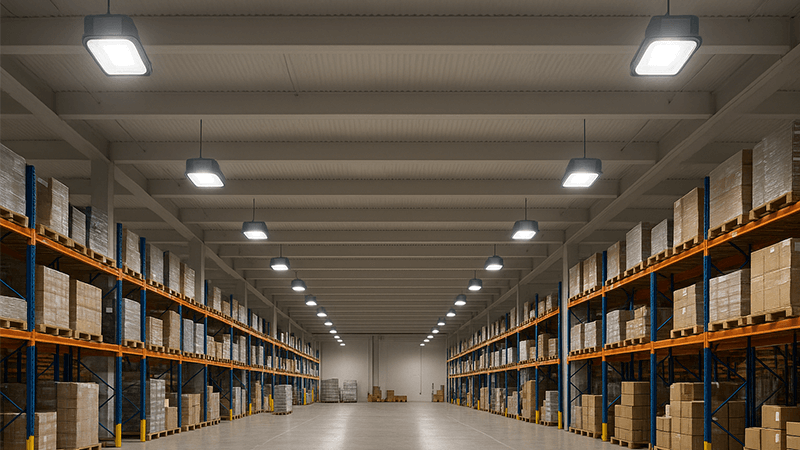
I’ve spent years in the lighting industry, helping clients like you find the perfect solutions. I’ve seen how transformative the right lighting can be, especially in demanding environments like warehouses. It’s not just about brightness; it’s about creating a safe, productive space. So let’s break down why LED floodlights are the superior choice and explore the key factors you need to consider.
What type of lighting is used in warehouses?
Are you still using outdated, inefficient lights in your warehouse? These old systems burn money and fail often. Let’s look at the modern options available today.
Warehouses commonly use high-bay lighting fixtures. Traditionally, these were Metal Halide (MH) or High-Pressure Sodium (HPS) lamps. However, modern warehouses are overwhelmingly switching to LED High Bays and LED Floodlights for their superior efficiency, longer lifespan, and better light quality.
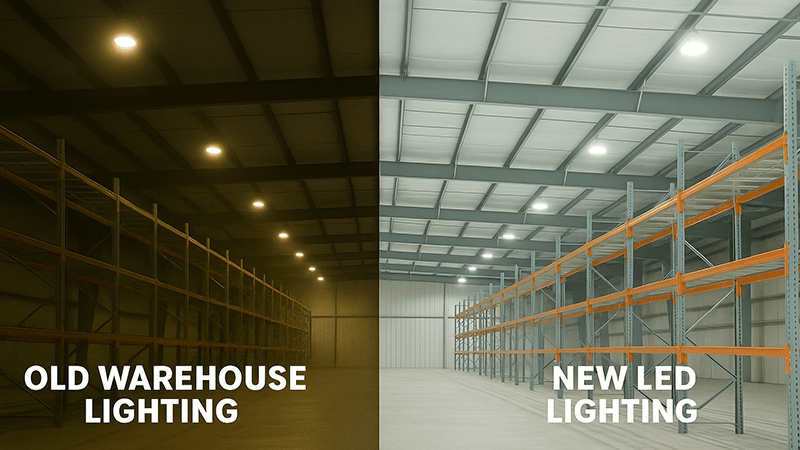
In my early days in this business, nearly every warehouse I walked into was lit by large, humming metal halide (MH) or high-pressure sodium (HPS) fixtures. They were the standard for high-ceiling spaces. HPS lights gave off that familiar orange glow, which had very poor color rendering. It made distinguishing between different colored labels or wires nearly impossible. MH lights were better, offering a whiter light, but they took a long time to warm up and were very energy-hungry. Both of these older technologies had relatively short lifespans, meaning maintenance crews were constantly up on lifts changing bulky, hot bulbs.
Today, the situation is completely different. The move to LED (Light Emitting Diode) technology has been a game-changer for industrial spaces. The most common replacements are LED high bay fixtures, which come in two main styles: the round "UFO" high bay and the long, rectangular linear high bay. They do a fantastic job of directing light down aisles.
However, LED floodlights are also a powerful tool for warehouse lighting. While many think of them for outdoor use, they are excellent for large, open indoor areas. A few well-placed floodlights can cover a massive amount of floor space, reducing the total number of fixtures needed and simplifying installation. The choice between a high bay and a floodlight often comes down to the specific layout of the space, a topic I love discussing with my clients to find the most efficient solution.
What is the purpose of a floodlight?
Do you have large, poorly lit areas in or around your facility? Dark spots are a safety hazard and a productivity killer. A specific type of light is designed for this problem.
The main purpose of a floodlight is to illuminate a large area with a wide, powerful beam of light. This makes them perfect for enhancing visibility and security in spaces like loading docks, parking lots, building facades, and high-ceilinged indoor areas like warehouses.
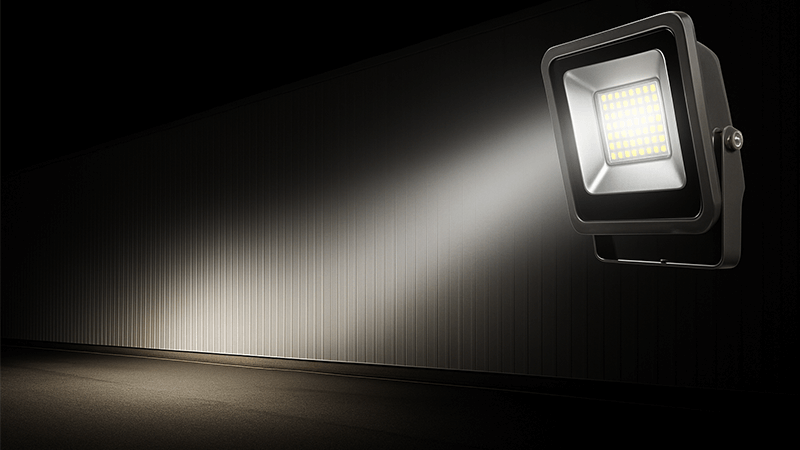
The key difference between a floodlight and other fixtures, like a spotlight, is the beam angle. A spotlight produces a very narrow, concentrated beam of light, maybe 45 degrees or less. A floodlight, on the other hand, creates a very wide beam, typically 90 degrees or more. Think of it like the setting on a garden hose nozzle: a spotlight is the powerful jet stream, while a floodlight is the wide shower setting.
This wide coverage is exactly why floodlights are so useful for warehouses and distribution centers.
Interior Applications
Inside the warehouse, especially in large open spaces for sorting or staging, a few powerful floodlights mounted high up can create a bright, even layer of light across the entire floor. This eliminates the dark spots and harsh shadows that can be created by fixtures with narrower beams. Fewer shadows mean fewer tripping hazards and a safer environment for workers operating forklifts and other machinery.
Exterior Applications
Outside, their purpose is even more critical. Properly lit loading docks are essential for safe and efficient operations, especially at night. LED floodlights instantly illuminate the entire area, making it easy for drivers to back their trucks in and for staff to load and unload goods safely. They are also a huge deterrent for theft. A well-lit facility perimeter, parking lot, and entry points make it a much less attractive target for criminals. I remember a client whose loading dock accidents dropped by 40% just by installing properly aimed LED floodlights. It’s not just about light; it’s about providing a secure and safe environment for your people and assets.
What are the specifications of LED flood lights?
Choosing a floodlight based on wattage alone is a common mistake. This can lead to poor performance and wasted money. You need to understand the key specs to make a wise choice.
Key specifications for LED floodlights include lumen output (brightness), wattage (energy use), efficacy (lumens per watt), color temperature (CCT), color rendering index (CRI), beam angle, IP rating (weatherproofing), and IK rating (impact resistance). These determine performance, efficiency, and suitability for an application.
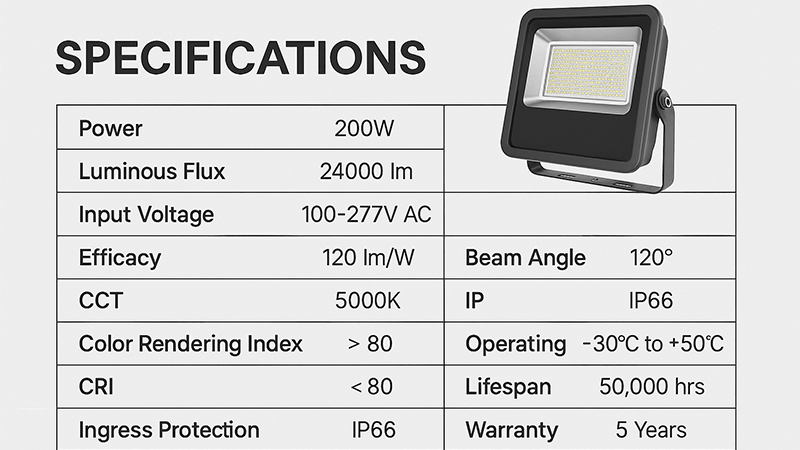
When you’re a purchasing manager like Shaz, you know that the details matter. Just looking at the price and wattage of an LED floodlight doesn’t tell you the whole story. I always guide my clients to look deeper at the specifications, because that’s where you find the true quality and value. Let’s break down the most important ones for a warehouse setting.
Key Performance Metrics
Efficacy (lumens per watt) is the most important spec for efficiency. It tells you how much light you get for every watt of energy you consume. A higher number means greater energy savings. Don’t be fooled by a high-wattage light; a lower-wattage light with higher efficacy can be much brighter and cheaper to run.
Color Rendering Index (CRI) is a measure of how accurately the light shows colors. For a warehouse, where staff need to read labels and identify products, a CRI of 80 or higher is crucial for accuracy and reducing errors.
Color Temperature (CCT) is measured in Kelvin (K). A CCT of 4000K to 5000K produces a neutral to cool white light that mimics daylight. This is ideal for keeping workers alert and focused.
Durability and Lifespan
IP and IK Ratings are about toughness. The IP rating tells you how well the fixture is sealed against dust and water (IP65 is a good standard for indoor/outdoor use). The IK rating tells you how resistant it is to physical impacts (IK08 is strong enough for most warehouse environments).
Heat Dissipation: The Unseen Specification
Many people focus on the specs you can see on the box. But I’ve learned that what’s inside the light is what truly determines its lifespan. Let’s talk about heat. LEDs generate heat, and if that heat isn’t removed efficiently, the LED chips degrade quickly, losing brightness and eventually failing.
A critical component here is the thermal management system. High-quality fixtures use advanced heat sinks. Some also use materials like thermal oil to transfer heat away from the electronics. Here’s something I’ve seen firsthand: manufacturers can cut costs by using a lower-grade, low thermal conductivity heat dissipation oil. This cheaper oil doesn’t transfer heat well. The light seems fine at first, but it will overheat. This leads to faster light decay, color shifting, and component failure, drastically shortening the LED’s life. In contrast, using a high-quality oil with high thermal conductivity improves heat transfer and temperature stability. This is the key to ensuring the floodlight performs for its entire rated lifespan. This is a crucial question to ask your supplier about. It’s what separates a reliable product from one that will fail in a few years.
| Specification |
Recommended for Warehouse |
Why it Matters |
| Efficacy (lm/W) |
130 lm/W or higher |
Maximizes energy savings for the same amount of light. |
| CCT (Kelvin) |
4000K – 5000K |
Provides a clear, white light that reduces eye strain and improves visibility. |
| CRI |
80+ |
Ensures colors of products, labels, and warnings are seen accurately. |
| IP Rating |
IP65 or higher |
Protects against dust and water, essential for durability. |
| IK Rating |
IK08 or higher |
Provides resistance against impacts from machinery or equipment. |
What is LED and its advantages and disadvantages?
You hear "LED" is better, but do you know why? Understanding its pros and cons is key to making a truly informed purchasing decision for your facility.
LED stands for Light Emitting Diode, a semiconductor that emits light when current flows through it. Its main advantages are high energy efficiency, extremely long lifespan, durability, and better light quality. The primary disadvantage is a higher initial purchase price compared to older technologies.
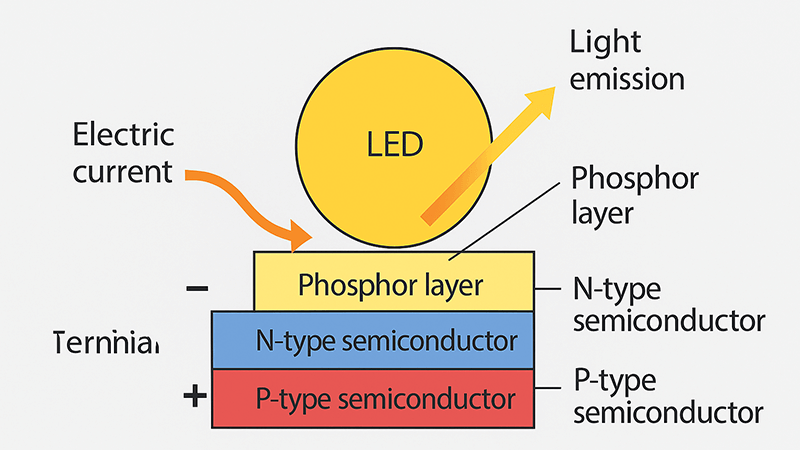
At its core, an LED is very simple. It’s a tiny semiconductor chip that lights up when a small amount of electricity passes through it. Unlike old incandescent bulbs that heat a filament until it glows, an LED creates light directly from the movement of electrons. This fundamental difference is the source of all its benefits. Over my years in manufacturing and sourcing, I’ve seen this technology completely reshape our industry. For a purchasing expert like Shaz, understanding these core differences justifies the investment.
The Overwhelming Advantages of LED
The benefits of switching to LED are significant, especially in a large facility that operates around the clock.
Energy Efficiency: This is the biggest selling point. An LED floodlight can produce the same amount of light as a 400-watt metal halide fixture while using only 150 watts of power. That’s over 60% in energy savings on every single fixture. When you multiply that across an entire warehouse, the reduction in your electricity bill is enormous.
Extremely Long Lifespan: An LED fixture is often rated for 50,000 hours or more. That’s over 5 years of continuous, 24/7 operation. This drastically reduces maintenance costs. You no longer need to budget for replacement bulbs or pay for the labor and equipment to change lights in high ceilings. However, this incredible lifespan is only possible with excellent thermal management. As I mentioned before, using low-quality internal components like poor cooling oil can destroy this advantage, causing the light to fail much sooner. This is why we focus so much on internal component quality.
Durability & Safety: LEDs are solid-state lights. They don’t have fragile glass bulbs or delicate filaments that can break. They are highly resistant to vibration and impact. They also contain no harmful mercury and produce very little forward heat, making them safer for employees working nearby.
The Disadvantages to Consider
Of course, no technology is perfect. It is important to be aware of the potential downsides.
Initial Cost: The main barrier for many is the higher upfront purchase price. LED fixtures are more expensive than their traditional counterparts. However, I always frame this as an investment, not an expense. The return on investment (ROI) from energy and maintenance savings is usually very fast, often within 1-3 years.
Heat Sensitivity (Quality Dependent): This is a critical point. While LEDs themselves are sensitive to heat, this is only a disadvantage for low-quality products. A well-designed LED floodlight with a superior heat sink and high-grade thermal transfer materials will operate flawlessly for years. The problem isn’t the technology itself; it’s the quality of the manufacturing. This is why choosing a reputable supplier who doesn’t cut corners on internal components is the most important decision you can make.
Conclusion
LED floodlights are the clear choice for warehouses. They boost safety and efficiency while lowering operating costs. Choosing a quality supplier ensures you get these crucial long-term benefits.